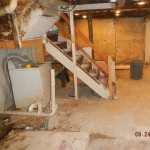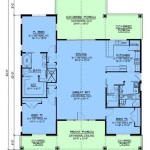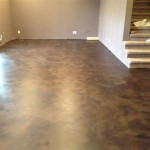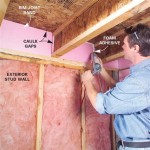Eliminating Moisture in the Basement: Essential Strategies for a Dry and Healthy Space
A damp basement can create a breeding ground for mold, mildew, and other allergens that can compromise indoor air quality and lead to health problems. Eliminating moisture in the basement is crucial for maintaining a comfortable and healthy living environment. Here are some essential aspects to consider for effective moisture removal:
1. Identify Source of MoistureUnderstanding the source of moisture in the basement is essential for developing an effective plan. Common sources include:
- Leaking pipes or drains
- Flooding from heavy rains
- Condensation on cold surfaces
- Poorly ventilated crawl spaces
Exterior walls and the foundation should be sealed to prevent water penetration. Cracks or holes in the foundation should be repaired using a hydraulic cement or epoxy injection. Sealants or waterproofing membranes can be applied to exterior walls to further repel moisture.
3. Improve Drainage SystemA proper drainage system is crucial to divert water away from the basement. Inspect gutters and downspouts to ensure they are clean and free of debris. Consider installing French drains or sump pumps to pump out excess water and reduce hydrostatic pressure on the basement walls.
4. Control HumidityHigh humidity levels in the basement can lead to condensation. Use a dehumidifier to remove moisture from the air, aiming for a humidity level below 50%. Regularly empty the dehumidifier to ensure it operates efficiently.
5. Ensure Proper VentilationGood ventilation is essential to reduce moisture buildup in the basement. Install exhaust fans or open windows to circulate air and release excess moisture. A ventilation system can be beneficial, especially for crawl spaces or basements with limited air exchange.
6. Insulate Walls and FloorsInsulating basement walls and floors can help prevent cold surfaces from condensing moisture. Consider using rigid foam insulation boards or spray foam insulation to create a thermal barrier and minimize cold spots.
7. Repair Leaks and Dry Wet AreasPromptly repair any leaks in pipes or drains to prevent water from seeping into the basement. Use a fan or dehumidifier to dry out wet areas thoroughly to prevent mold or mildew growth.
Additional Tips:- Keep the basement decluttered and free of items that absorb moisture, such as cardboard boxes.
- Use moisture-resistant materials for basement flooring, such as vinyl or tile.
- Consider using a vapor barrier under flooring to prevent moisture from rising from the ground.
- Inspect the basement regularly for signs of moisture buildup or mold growth and address them promptly.
By following these essential steps, you can effectively eliminate moisture in the basement, creating a healthier and more comfortable living space. Remember to prioritize safety when working with electrical components or plumbing and consult a professional if necessary.

Moisture In Basements Causes And Solutions Umn Extension

3 Ways To Prevent Humidity In A Basement Wikihow

6 Causes Of Basement Moisture How To Fix Them

How To Reduce Humidity In A Basement Thermopro Blog

8 Ways To Eliminate Basement Moisture Northeast Property Restoration

How To Control Moisture In Basement Maramani Com

How To Get Rid Of Humidity In A Basement Without Dehumidifier

How To Prevent Moisture Problems In The Basement Dki Services

Things To Know About Basement Moisture Control Blog

How To Get Rid Of Humidity In A Basement Without Dehumidifier
See Also








